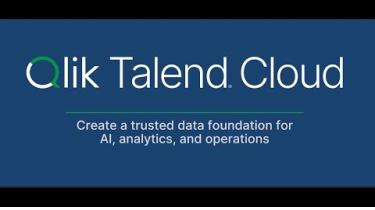
When questions of technology selection and architecture design are dominating your data agenda, some important goals and outcomes can get overlooked. A roadmap approach can help by keeping the focus on what data can do for your people, without losing sight of the bigger picture that aligns investments in data with strategic priorities.
To say that data – along with talent – is one of the most valuable assets an organisation has, is not a controversial statement. But the question of how to access it in a useful way is something many organisations continue to grapple with. As the operating environment becomes ever more unpredictable due to advances in technology, globalisation – not to mention all the challenges associated with COVID – the value in a strong data capability and culture is growing by the day.
An Accenture’s report highlights, becoming a high-performing, high-growth organisation supported by data-driven decisions is no small undertaking. Their list of essentials includes strategy, technology, governance and culture and transforming even one of these elements takes a big commitment of time and resources. And as the volume of data organisations can access – from internal and external sources – keeps growing, the foundation work that goes into the simple task of delivering the right data to the right people at the right time can seem daunting to say the least.
Decisions that deliver value
While it’s a journey that’s not for the faint-hearted, the stakes are too high to ignore. Investments in data transformation can lead to a significant payoff, even in the short-term. A 2021 report from Deloitte Access Economics found that over a third of organisations surveyed mentioned the biggest impact of not embracing data was delays in decision making. While the exact cost of slow or poorly informed decisions can be hard to measure, analysis from the Harvard Business Review points to a strong correlation between decision effectiveness and financial results.
When leaders consider what this informed decision-making could look like in their organisation, it can be tempting to steer by a vision of predictive analytics and modelling that technology vendors promise to deliver.
This goal of using data to predict outcomes that drive decision making can be of significant value to an organisation and should form part of the overall data strategy, however for most this ideal future state can be a major distraction from the deep-rooted data challenges we often see among our clients. To do their jobs quickly and with more confidence and less frustration, people need fast answers to their business questions. The question can be as broad as ‘how are we tracking against forecasts?’ or as specific as 'when is that order expected to arrive and what impact will it have on our inventory and sales plans?’
Getting the right answers to these mission critical day-to-day questions can rely on a single data source or many. And there is no doubt technology has the capability to deliver an automated, convenient and accessible way for answering these mico-decisions. But technology alone will not solve this challenge!
Success starts with strategy
When it comes to reducing delays and errors that are bound to happen when humans are responsible for data collection and reporting, technology can work wonders. But as we’ve flagged, there are numerous potential questions to be answered. And while technology is up to the heavy lifting involved in answering every single one of them, getting it configured to do so is a mammoth task. Knowing what the most critical questions are and where to start with the wish list can only be determined by humans.
“Technology leadership and harnessing disruptive forces does not hinge on whether a CEO has access to the best technology, it is whether they have an ability to think about their businesses in a fundamentally different way to their peers.”
Australia’s CEOs are spending billions on AI and data, Australian Financial Review, 4 January 2022
When the humans can also connect each question to an organisation’s strategy and most important goals, and prioritise accordingly, this is where the maximum value can be delivered for the least effort. By defining insights that will best support strategic outcomes, big wins can come from even a modest uplift in data capability. This can create the momentum – in terms of both investment and adoption – that it takes to make data a priority and demonstrate its true value as an asset.
“Organisations with a well-defined, firm-wide strategy for leveraging data are more likely to invest in their data and analytic capabilities. For instance, these organisations are 20% more likely to invest in data collection or analytic tools and 40% more likely to train existing staff in data and analytics, compared to organisations who do not have firm-wide data strategy.”
Demystifying data 2021: Unlocking the benefits of data maturity and machine learning in Australia and New Zealand, Deloitte Access Economics
Delivering the right answers
This mapping of business questions to strategic goals is one side of the value equation for data. The other is matching the data to the questions to ensure the answers are both relevant and accurate. Connecting all these dots in the data/human/organisational matrix is complex and takes a skillset and approach that can move up and down the levels of detail and be nimble in switching from an operational focus to a strategic one and back again.
As a Qlik data and analytics partner, we’re experts in helping our clients realise a competitive advantage from their data. While deep knowledge of the Qlik suite has helped us deliver best-practice business intelligence frameworks and solutions for over 600 projects, it’s our understanding of how data and organisational dynamics work together that really helps our clients maximise value, efficiency and performance from their investments in data and analytics.
The idea of creating a data and analytics roadmap for the enterprise can be a daunting task, especially with the constant demand from the business for faster insights, contact us to find out how we can support you.



